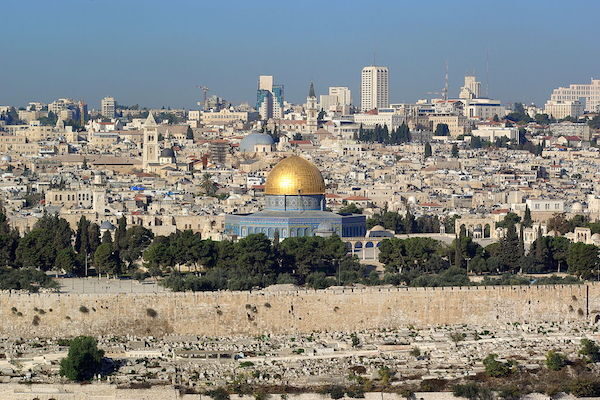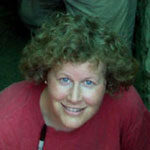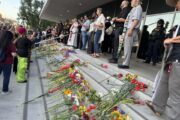There is an unholy secret hiding in Jerusalem.
So says the website and promotional material for the USA Network Show: Dig. It airs this spring as a 10-part series that promises a Da Vinci Code-like thriller and murder mystery set in the world’s holiest city. Dig features archaeologists and investigators on the job in Jerusalem where the future of the world hangs in the balance.
“A once-decorated FBI agent is sent to the edge of the world where he confronts a mystery buried by time,” the show’s Facebook page says. According to Dig’s star, actor Jason Isaacs, who plays the FBI agent, the show has “…an enjoyably complex plot that really captures the zeitgeist.” Cameras chase our hero into tunnels that dive beneath Jerusalem’s walls, markets, houses and shrines.
For some, using this World Heritage site as a location provides an authentic stage for a scripted drama; it makes for good TV. For others, it is a troubling, political act that plays a part in the protracted conflict among those who seek Jerusalem as its capitol city. Regardless of whether viewers enjoy the show, its clichéd depiction of Jerusalem remains politically potent and resonant with holiness for the faithful.
Media has the power to shape our beliefs about a place or a time, whether authentic or not. Egypt’s censors, for example, recently reacted to Ridley Scott’s film Exodus. In it, Scott depicted Moses and Ramesses the Great in an epic conflict that invoked Israelite blood, sweat and tears in connection with Egypt’s top tourism magnet: the pyramids. Ancient Egyptians appeared as militaristic perpetrators and Israelites as victims deserving freedom and a homeland. Ultimately, the realness of this vision undercut its entertainment potential because it toyed a bit too freely with the political and tourist capital that Egypt had worked so hard to amass. So, it was banned.
Location matters. In Dig, inter-cutting a few minutes of film shot in the Jerusalem’s Old City transforms the mundane into the marvelous. Mindless action sequences support Israel’s vision of Jerusalem; that there are threats lurking around every corner. Indeed,Dig’s crew was chased out of Jerusalem part way through filming by bombardments from Gaza, and other cities stood in for Jerusalem thereafter. But, what they captured before leaving was sufficient to imprint the coveted, holy city in our mind’s eye, with a golden dome transforming what we would see afterward into something else entirely.
For Dig’s producer, Gideon Raff, an Israeli who learned his trade in southern California, there are numerous benefits in siting his show in the real Jerusalem. For him, this holy city is an evocative location that suggests secrets and delivers gold in the form of incentives and on-screen authenticity.
Meanwhile, Minister of Jerusalem and Diaspora Affairs Naftali Bennett confirms that it’s worth the investment for Israel to attract this kind of project. For Israel, theunderground channels that once allowed Roman-era fecal matter to slide downhill now capture tourist cash. “A picture is worth a thousand words — sometimes shooting a series in Israel is worth more than a thousand publicity tours of the country,” Bennett said. These incentives seem to make filming in Jerusalem a win-win for Israel and filmmakers from abroad.
The places shown on screen—the tunnels that extend the City of David excavations into a darkened tourist park or the raised platform on which we see the golden Dome of the Rock—are claimed as heritage by Israelis and Palestinians, by Christians, Jews and Muslims, and others too. When people and places are filmed in Jerusalem, it is part and parcel of “…the performance and negotiation of identity, values and a sense of place,”according to heritage experts Laurajane Smith and Emma Waterton.
To succeed in its entertainment mission, Dig merely has to evoke the social, cultural and political contexts in which life, faith and the tales we tell ourselves all unfold. However, the emerging tourist experience is built around tunnels and passages that allow visitors to bypass the contemporary residents and markets of the Old City without interacting with them, without spending money in their shops. Dig shows us the residents of the Old City as uncredited and likely unpaid extras that bring an ethnographic authenticity to the show. What is left out of the heritage phantasm — what one does not see — is as important as what one sees. Ancient residents of Jerusalem matter while modern Arab and Palestinian residents don’t.
While filmmakers may not see the political impact or import of their work, others do see it. Dig’s filmmaker dismisses the possibility that his show is a weapon in the public diplomacy arsenal of Israel when he insists that he was “…not doing anything to be provocative,” and that “this is not a show about the (Israeli-Palestinian) conflict.” From a public relations perspective, one understands this contention: who wants to watch a show that might drag on like that real-life conflict, or that feels like a tourism promo?
But, PLO negotiator Hanan Ashrawi disagrees with him. She argues that locating the production in Jerusalem “will legitimise the annexation of Jerusalem and the destruction of the authenticity and character of the occupied city.”
Respected Israeli Supreme Court Justice Edna Arbel also agrees that this ancient place has a political power that cannot be denied, or even be left dormant. To her, it is clear that archaeologists must mine resources with political power. This is one reason why she encouraged excavators in the City of David/Silwan village to continue working to create tunnels to allow tourists to recreate a pilgrimage up to the location of the ancient temple, or to visit stone walls that function as a nationalist stage on which to perform the drama of Israel’s ancient founding. “The City of David tells the story of the thousands of years of Jerusalem’s history, as can be gleaned from the Bible and elsewhere. National and international importance attaches to revealing the secrets of the City of David.”
In Dig, billions of pixels show our FBI agent hero in the streets and roughly cut tunnels of Jerusalem’s Old City. These scenes are effective because they resonate with authentic rather than scripted conflict, and each line of dialogue delivered there stands in for the calls and prayers of millions for salvation, both personal…and national.
Lynn Dodd is co-founder of the Israeli-Palestinian Archaeology Work Group and the Institute for Shared Heritage, past initiatives of the Center for Religion and Civic Culture.
Photo by Berthold Werner
Lynn Dodd is a guest contributor with the USC Center for Religion and Civic Culture.







